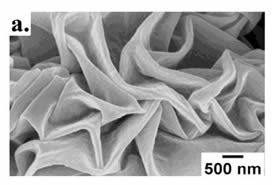In the case of infectious diseases, such as tuberculosis, HIV/AIDS, malaria, and other deadly diseases, detection is always the key in preventing its spread. It also helps find the most potent treatments available. The current detection methods can be prohibitively costly. However some researchers have discovered a detection method that uses common shrink wrap, which could provide an effective yet affordable detection method of these infectious diseases.
This nanotechnology method, which is the subject of a paper published in the journal Optical Materials Express, can enhance the fluorescent markers during biosensing with the use of certain metals placed onto shrink wrap.
The accessibility and affordability of shrink wrap opens develop low-cost nanostructures that have the ability to enhance fluorescence a thousand times more so even in the lowest limits. This is according to the paper’s co-author Michelle Khine, a University of California, Irvine biomedical engineering professor.
The process starts with depositing thin layers of nickel and gold onto the shrink-wrap film. It is then heated, causing the metal layers to change into flower-like structures as the wrap contracts. The researchers then add in samples of biomarkers, antibodies produced by the immune system when there is infection. These biomarkers can be easily spotted because of their fluorescent probes that can be detected by near-infrared light.
As the shrink wrap wrinkles, it amplifies the signals from the biomarkers. The research team said that the result is a flurry of activity among the localized surface plasmons. When they put their sample under infrared light, they saw the electromagnetic field was even more emphasized even by the smallest wrinkles on the shrink wrap. These helped them find hotspots, or the areas where the biomarkers emitted higher than average signals.
However, the team has not used this method on bodily fluids. They admit that their detection process still needs a lot of polishing. They are currently trying it on rotavirus detection, which presented the shrink wrap’s water repellent properties.
Although the team is still using expensive equipment, they believe that they could develop a low-cost device to better detect the biomarkers.
To learn more follow the links below.

